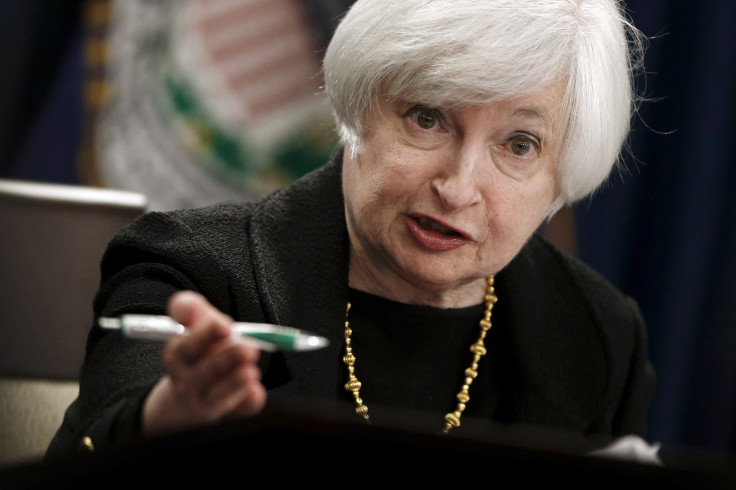As The Federal Reserve Holds Interest Rates, What Did We Learn About The Economy?

In an anxiously awaited announcement, Federal Reserve Chair Janet Yellen said this week that benchmark interest rates would remain unchanged, continuing a nearly seven-year stretch of unusually accommodative monetary policy.
On one hand, the move fell in line with the Fed’s dual mandate of maximizing employment and controlling inflation. While unemployment stands at a healthy 5.1 percent, key inflation measures remain well below target levels.
Yet the announcement, and Yellen’s subsequent comments to the press, indicated that the rate-setting committee has kept a close eye on international market moves as well. “The situation abroad bears close watching,” Yellen told reporters Thursday, referencing China’s market meltdown and wider malaise in the world’s emerging markets.
Observers took particular note of the Fed’s mention of “global economic and financial developments” in its highly scrutinized press release, a shift from previous statements.
Peter Ireland, a professor of economics at Boston College, told International Business Times that although that kind of mention had appeared before in Fed statements, “it was always accompanied by qualifications. It was quite surprising to me that in today’s decision international concerns have been elevated.”
Ireland said market moves shouldn't fall within the Fed’s purview, a view many investors share. “There’s a dangerous possibility that the Fed might be led by the global markets rather than global markets being led by the Fed,” Ireland says.
The decision followed a month of global financial unease and volatility that shook U.S. markets out of a long bull run in August. Still, Yellen made sure to emphasize that it wasn’t just market events themselves but their implications for the domestic economy that drove the Fed’s reasoning.
“In light of the developments that we have seen and the impacts on financial markets, you want to take a little more time to evaluate the impacts on the U.S. economy,” Yellen said.
“The Fed should not be responsive to the ups and downs of the markets,” Yellen continued. “But when there are significant financial developments, it’s incumbent upon us to ask ourselves what is causing them.”
Years of near-zero interest rates have helped cut unemployment rates nearly in half from their mid-recession highs of 10 percent, Yellen said. But the Fed is anxious to bring rates back in line with historic norms.
Markets had long expected the first benchmark hike to occur in September, until financial turmoil made that seem a distant possibility. Futures used by traders to bet on federal funds rates now imply a 45 percent chance that a hike will occur at the committee’s meeting in December. October carries only a 16 percent probability.
It wasn’t only overseas economies that convinced the Federal Open Markets Committee to hold its fire. Although jobless claims have fallen significantly and job openings are at record highs, Yellen indicated that there may still be room to improve in the labor market.
Seven years into the recovery, wage gains are still elusive. And labor force participation has slid to three-decade lows, with signs that many potential job-seekers have simply given up.
Yellen said that the Fed needed “further improvement in the labor market to bolster its confidence that inflation will rise.” Inflation rates, depressed by a strong dollar and cratering oil prices, remain well below the Fed’s target of 2 percent. The Fed estimated a 1.4 percent annual change in the core personal consumption index, which excludes volatile energy and food prices.
“Inflation just remains stubbornly and surprisingly low,” Ireland says. “The statistics on employment tell the Fed it’s time to raise rates. That’s a hard thing to do when you’re so far below inflation targets.”
Markets surged then fell after news of the decision Thursday afternoon, with traders already anticipating the next decision in October.
© Copyright IBTimes 2024. All rights reserved.





















